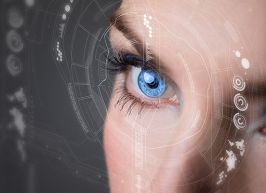Únase a getAbstract para acceder al resumen.

Únase a getAbstract para acceder al resumen.
Microsoft | ALT Stories
Microsoft Premonition: What if we could predict epidemics like we predict the weather?
Through a network of robotic sensing platforms, Premonition aims to continuously monitor our environment to detect potential pathogens and disease-carrying animals before they cause outbreaks.
Microsoft, 2021
¿De qué se trata?
Microsoft’s Premonition tracks mosquitos to raise alarms for and prevent future disease threats.
Recommendation
What if science could predict disease threats the way it can predict the weather? Mosquitos are responsible for 600 million disease cases a year because they transmit pathogens from the environment to humans. Microsoft’s Premonition project created robotic “smart traps” to lure, capture and analyze mosquito DNA. When networked, these traps can “map the biome” and look for genetic anomalies and potential pathogens, before they reach the human population. To date, Premonition has analyzed 80 trillion base pairs from these environmental samples. Working with industry partners and public health authorities, Microsoft intends to “change the paradigm” from a reactive to a proactive model for tracking threats.
Take-Aways
- Humans rely on the world’s smallest species for survival.
- Mosquitos are among the world’s biggest disease carriers, and also carry a great deal of genetic information about their environment.
- Microsoft’s Premonition project started with “smart traps” to monitor mosquito populations.
- The Microsoft Premonition Proving Ground recreates the environments mosquitos thrive in.
- Cloud-scale genomic analysis can identify evolving changes in an environment that could pose threats.
- Microsoft’s partners are collaborating to bring Premonition to the world.
Summary
Humans rely on the world’s smallest species for survival.
The world’s smallest species make up 80% of life on Earth, and form the foundation for other species. There are millions, even billions of species of arthropods (mosquitos, bees, beetles), microbes and viruses; scientists haven’t yet identified them all. Some arthropods, such as bees, are mass pollinators and beneficial to humans, while others carry pathogens that can disrupt human life in catastrophic ways. The Ebola virus outbreak in Africa in 2014 inspired Microsoft to investigate how disease originates and spreads. They realized that a “global sensor network” could monitor organisms’ activities in different environments. Every living thing creates traces that can be tracked over time. New developments in robotics, autonomous systems and cloud computing make it possible to “map the biome” at a scale previously not imagined.
“Premonition would change the paradigm, from reacting to known pathogens to continuously looking for them as they evolve.”
Douglas E. Norris, an entomologist and professor in molecular biology and immunology at Johns Hopkins University, identified Premonition as a “game-changer.” Currently, mosquito control has been “reactive” based on what is observed. With a better forecasting system, controllers can spray affected areas before they become problematic. It is also more cost-effective. Fighting mosquito-borne illness takes a lot of public health resources. The health of humans relies on their environment. Premonition can help public health authorities measure which interventions are most effective and calculate their cost.
Mosquitos are among the world’s biggest disease carriers, and also carry a great deal of genetic information about their environment.
Mosquitos cause approximately 600 million disease cases per year. Since they interact so much with other organisms in their environment, they make good specimens for analysis.
“A network of smart traps work together to provide massive amounts of real-time data, helping to build a ‘weather map’ of the biome.”
Smart traps can monitor certain “signals” via mosquitos, such as:
- Hosts – Mosquitos feed off other animals, and carry that host’s genetic material in their body.
- Carriers – With 3,600 known mosquito species, better monitoring would identify which carry pathogens.
- Pathogens – Viruses, for instance, evolve continuously. Monitoring them would help identify which ones pose a threat.
Microsoft’s Premonition project started with “smart traps” to monitor mosquito populations.
Bees, beetles and mosquitos comprise the largest population of terrestrial species, and interact continuously with their environment in innumerable ways. To capture the “signals” they produce, Microsoft created a smart device that literally pulls arthropods from mid-air. These “smart traps” lure arthropods and then scan them to identify their species and whether they should be captured for further analysis. One smart trap captured 10,000 signals from ambient life in just one evening.
“Threats to human health, and threats to our economies and societies are regularly emerging.”
The real challenge, however, is to network that data with other smart traps, across the globe, to generate the “transformational” scale required to find patterns and anomalies. This network would understand environments from data collected from millions of arthropods. The kinds of genetic anomalies it would look for include:
- Mosquitos that might produce pathogens.
- Invasive species that are resistant to controls.
- Population decreases among pollinators, signifying disease.
For the traps to be most effective, they need to operate at scale, dispersed broadly in different habitats, and networked. These “nodes” would create new streams of Internet of Things (IoT) information that currently don’t exist.
The Microsoft Premonition Proving Ground recreated the environments mosquitos thrive in.
The Premonition Proving Ground is a CDC and USDA-approved biocontainment facility for capturing and analyzing mosquito species from all over the world. In its safe, secure site, researchers built a chamber in which they could conduct controlled, repeatable experiments. It contains three separate spaces:
- “Airlock” – Specimens are sealed in the airlock before being released in the main chamber.
- “Rearing chamber” – Where mosquito eggs are hatched and larvae are reared.
- “Experimental chamber” – Where tests are conducted on mosquitos interacting with prototype traps.
This chamber replicates everything from nitrogen levels to angles of the sun to wind speed, then observes mosquitos interacting with that environment.
“The laboratory biome can be set to any place and date, and it will replicate the solar cycle that would have been experienced there.”
The data they collect helps scientists build an effective smart trap to use in urban and wild areas. The smart trap can track mosquitos more accurately than a human can, and track hundreds at once. With repeated testing, the developers can hone the device to best lure and trap in mosquitos’ natural habitats.
Cloud-scale genomic analysis can identify evolving changes in an environment that could pose threats.
The Proving Ground also allows for rapid prototyping. All the devices in the Proving Ground are networked together and connected to the cloud. The data is securely stored and analyzed.
With large-scale cloud computing power, Premonition can take genetic information from a single mosquit0 and compare it to a database of three trillion base pairs to build a statistical model. To date, Premonition has analyzed 80 trillion base pairs from these environmental samples. Until now, it was impossible to detect trillions of viruses and bacteria and millions of species due to their vast scale and diversity.
“Metagenomics is particularly well-suited to analyzing complex environmental samples where many of the microorganisms may be novel.”
Cloud-scale machine learning, along with a massive database containing reference genomes from across the tree of life, feeds Premonition’s “metagenomics” pipeline. When analyzing organisms and viruses, this technique permits researchers to test at the macroscopic level for all known sequenced pathogens. Premonition will also find connections among potential pathogens and hosts.
Microsoft’s partners are collaborating to bring Premonition to the world.
Robotic smart traps have the potential to be early warning systems. They can detect and analyze mosquito species that might transmit diseases such as malaria, dengue fever, Zika and chikungunya. They would be similar to weather stations, continuously feeding data to create “weather-like forecasts of threats.”
“If the biome could be monitored like the weather, environmental pathogens might be detected earlier and outbreaks predicted before they cause large epidemics. ”
Public health is a big priority for Microsoft, and there are many opportunities for Premonition to aid in research to protect human and animal populations. They will coordinate with Harris County Public Health to set up “one of the most advanced biological threat detection networks, at scale” for mosquito-borne pathogens. The data sets Premonition produces can also be used for basic science. Recently, the National Science Foundation partnered with Microsoft to utilize this data across various disciplines.
Microsoft can’t do this work alone. They understand that it is necessary to partner with other experts in robotics, AI, cloud computing, genomics, vector biology, virology and epidemiology in order to effectively map the biome. For this work to be truly transformational, tech companies need cooperation from higher levels of government as well as academics and industry.
About the Author
Microsoft Corporation is an American multinational technology corporation that creates computer software, consumer electronics, personal computers, and related services.
This document is restricted to personal use only.




















Comment on this summary